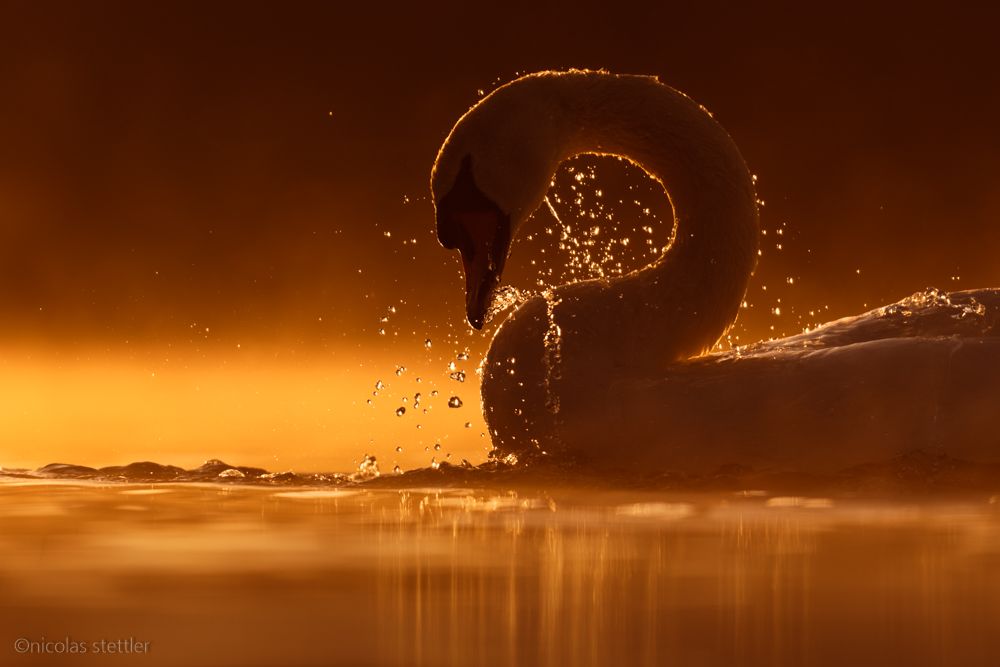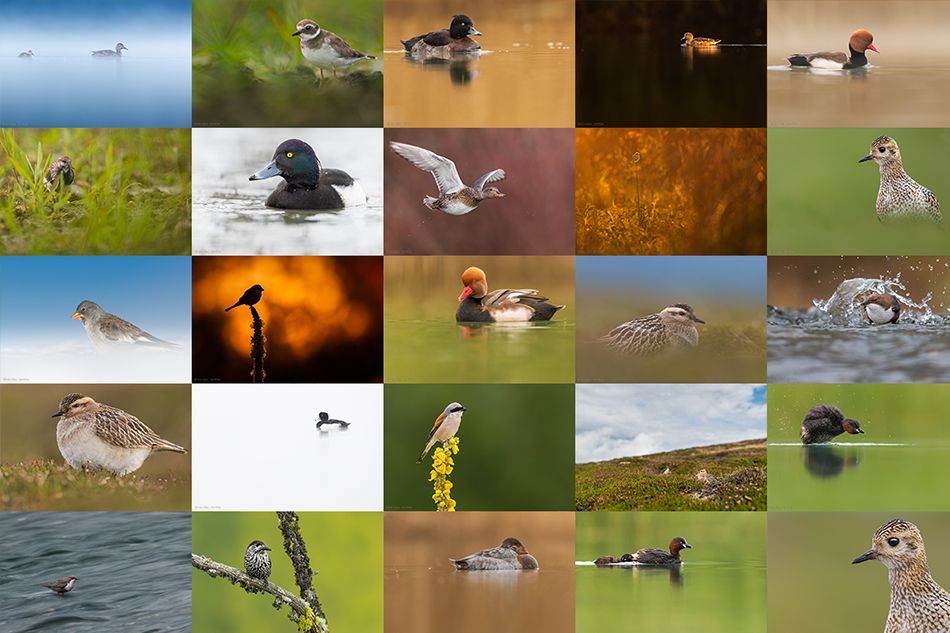My 10 best images of February
February was a rather difficult month for me photographically. I didn't really find many birds and the photographic output was rather sparse over the whole month. However, some moments were particularly beautiful this month and were also photographically successful.
1. Mute swan portrait

This Mute Swan was sleeping a bit below me at the lakeshore. He was not disturbed by me and slept on. This allowed me to play a bit with the composition of the picture. With the head in the upper left corner, I liked the picture best. With this image, I also had to pay close attention to the histogram. Due to the white plumage and the dark areas on the head, it was quite difficult to expose correctly. But with an exposure time of 1/640, ISO 200 and f/ 7.1, the plumage as well as the hump of the beak and the eyes were reasonably well exposed. I was then able to adjust the contrasts a bit in Lightroom and Photoshop.
2. Short-toed treecreeper

On this particular day, I was actually waiting at the edge of a soccer field for redwings. But this treecreeper stole the show and landed on a tree right in front of me. I was just lucky and the treecreeper climbed up the tree in such a way that it was just sideways on the tree trunk from my position. The soccer field was just behind it, giving me a nice quiet green background.
I decided to use a vertical composition to show a little more of the tree. With a horizontal composition, too much space would have gone to the green background. Also, because the bird is more or less looking up here, this photo makes a little more sense in portrait format.
3. Long-tailed tit

At this location I was already able to photograph tail tit quite well last month. This month it worked out again. Shortly before the sun disappeared behind a mountain range, this long-tailed tit landed as if out of nowhere, on my set-up branch. Fortunately I was ready and managed to take this photo before the bird disappeared into the forest again. Due to the backlight, the outermost feathers began to glow orange.
4. Mallard at sunset

I had already visited this location several times last year. In winter, the sun sets there just enough to make the reeds in the background glow orange. But this year I had only little luck with this location, because we had only very few sunsets in the region. In February, however, the weather was finally a little better and I was finally able to photograph at a sunset once again. Although I was not able to photograph a rare species, I am still very happy with the picture.
The female mallard swam a little faster and so I had a whole series of pictures where the two are at different distances from each other. I like this picture best because the male is not obscuring the female, but they are also not too far apart.
5. Alpine accentor in the snow

While waiting for the bearded vulture, this Alpine Accentor suddenly landed in front of me. At this place the birds are often fed and so this bird was anything but shy. This bird even walked between my legs.
Photographing the bird was therefore quite easy. Only the minimal focus distance was sometimes a bit of a problem. But this is one of the best problems you can ever have in wildlife photography!
I positioned myself a bit below the edge of the mountain so that I could include the blue background in the picture. Together with the mountains in the background, this gave me a nice gradient from white to blue. Fortunately, a cloud was moving up the valley and hid the sun for a short time, which made the light very soft.
6. Red-crested pochard before sunrise

Just before sunrise, this female red-crested pochard swam towards me. The morning glow in the background was reflected in the water and created these very nice colours. In addition there was some fog, which moved slowly over the water. While the colours were already very strong, the light was still very limited. So this photo was taken at 500mm and f/4 with a shutter speed of 1/250 and ISO 1250. This was enough and besides some slightly blurry photos, this picture was taken which is perfectly sharp.
7. Mute swan underwater

Despite the still very cool temperatures, I was able to try out my underwater housing for the first time in mid-February. I simply held the housing underwater and released blindly. This caused many blurred photos, but with the current temperatures it was simply not possible otherwise. Despite the difficult conditions, I am quite satisfied with this photo. The water was a bit murky and dirty from the intense rains, but I like the colours and composition quite a bit. Of course, I hope to improve the photo a bit more in the summer when the water temperatures are a bit warmer. I also have some other ideas with the housing and I can't wait until it finally gets a bit warmer again and I can really test the housing.
8. Little egret

I had seen this egret quite often at this location, but I never photographed it before. This one was sitting practically every day on a big beaver den in which small fish were hiding. The little egret only had to pick them out. Even if this beaver den was right next to a path, the egret was not disturbed at all by the many people. On this day the light was optimal and I could try out various compositions.
9. Mute swan on a foggy morning I

So far this winter the weather conditions were rather less ideal. It was mostly cloudy and sunrises or sunsets were rather rare. But this morning the conditions were just perfect. Thanks to a clear night, a fine layer of fog formed over the water in the morning. At this location, a small river flowed into the lake, which created even more fog. However, the sky was still clear and the fog was beautifully illuminated by the sun. In the backlight, the fog came out especially well. Although I was unfortunately only able to photograph common species such as mute swans or coots that morning, this was perfectly adequate given the conditions. In the case of the mute swans, the fog even formed when the birds exhaled. Since the fog formed different shapes each time they exhaled, I took hundreds of photos that morning. This photo was one of my favourites.
10. Mute swan on a foggy morning II

The morning was such a great success that a second image of the mute swans also made it into this month's top 10. One of the mute swans, which was at this location, finally started to preen itself. He dived under for a short time and then spread the water on his plumage. The water drops flew in all directions and were illuminated by the sun. So the water drops were still clarified by the backlight.

